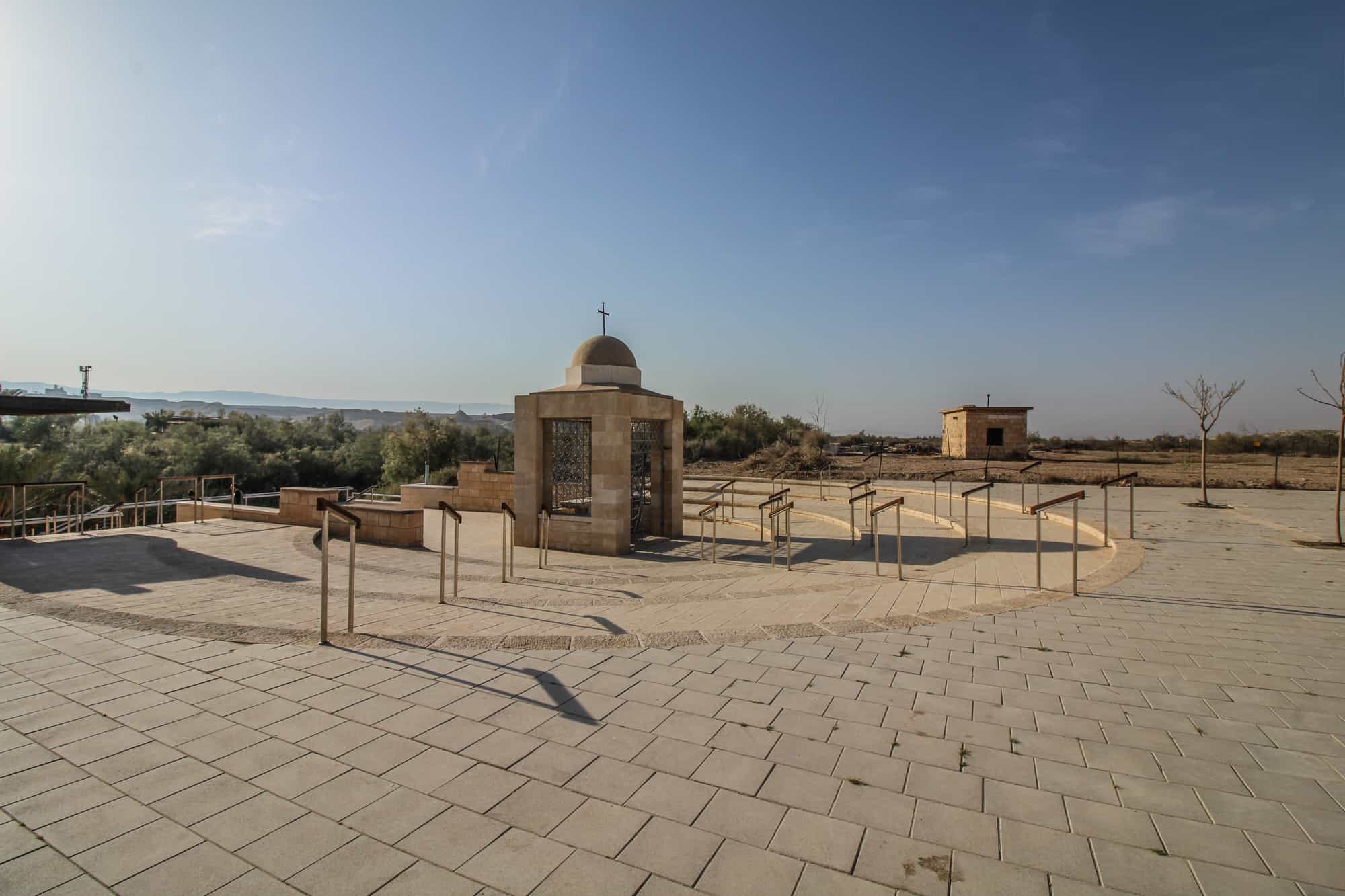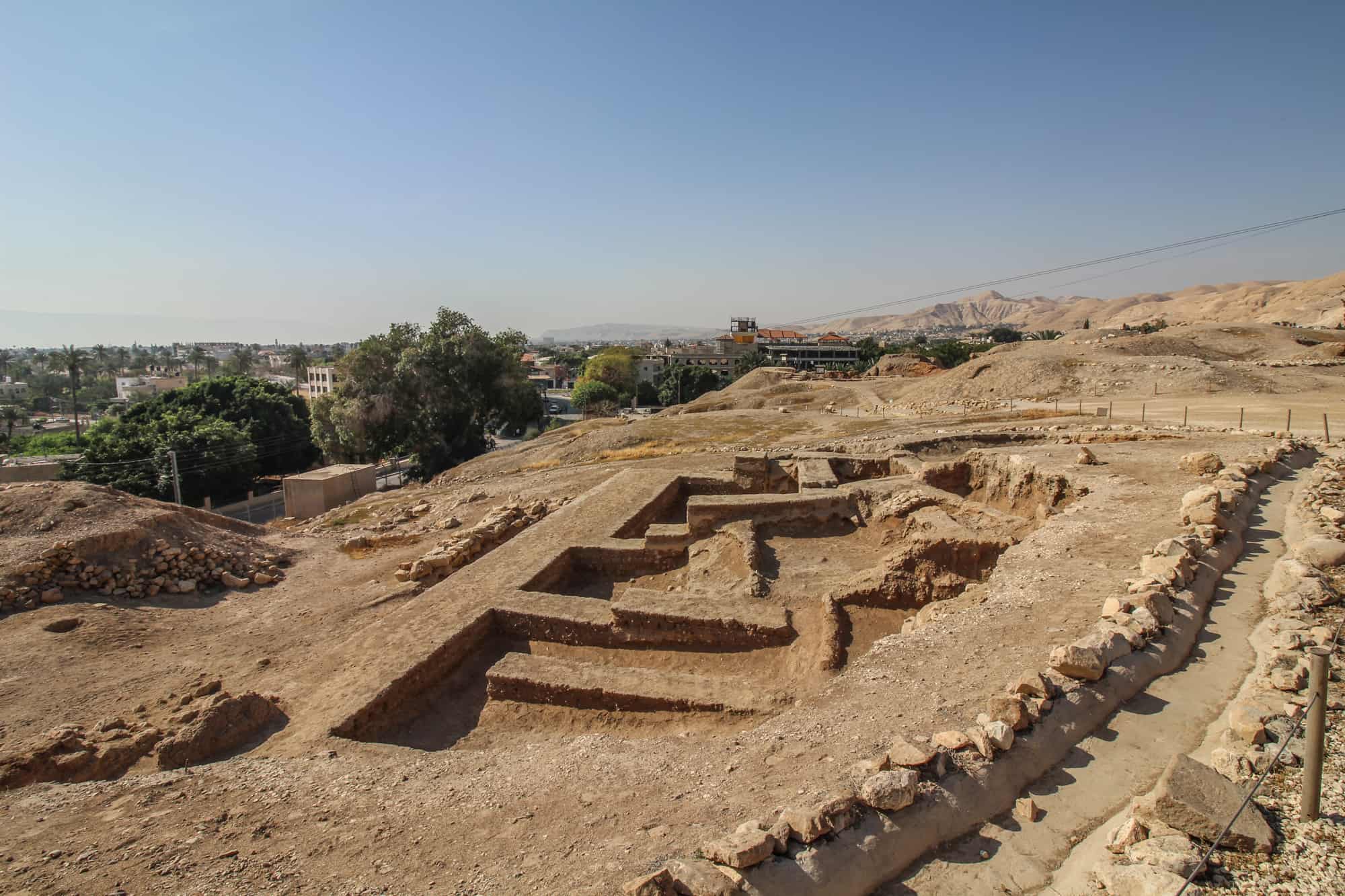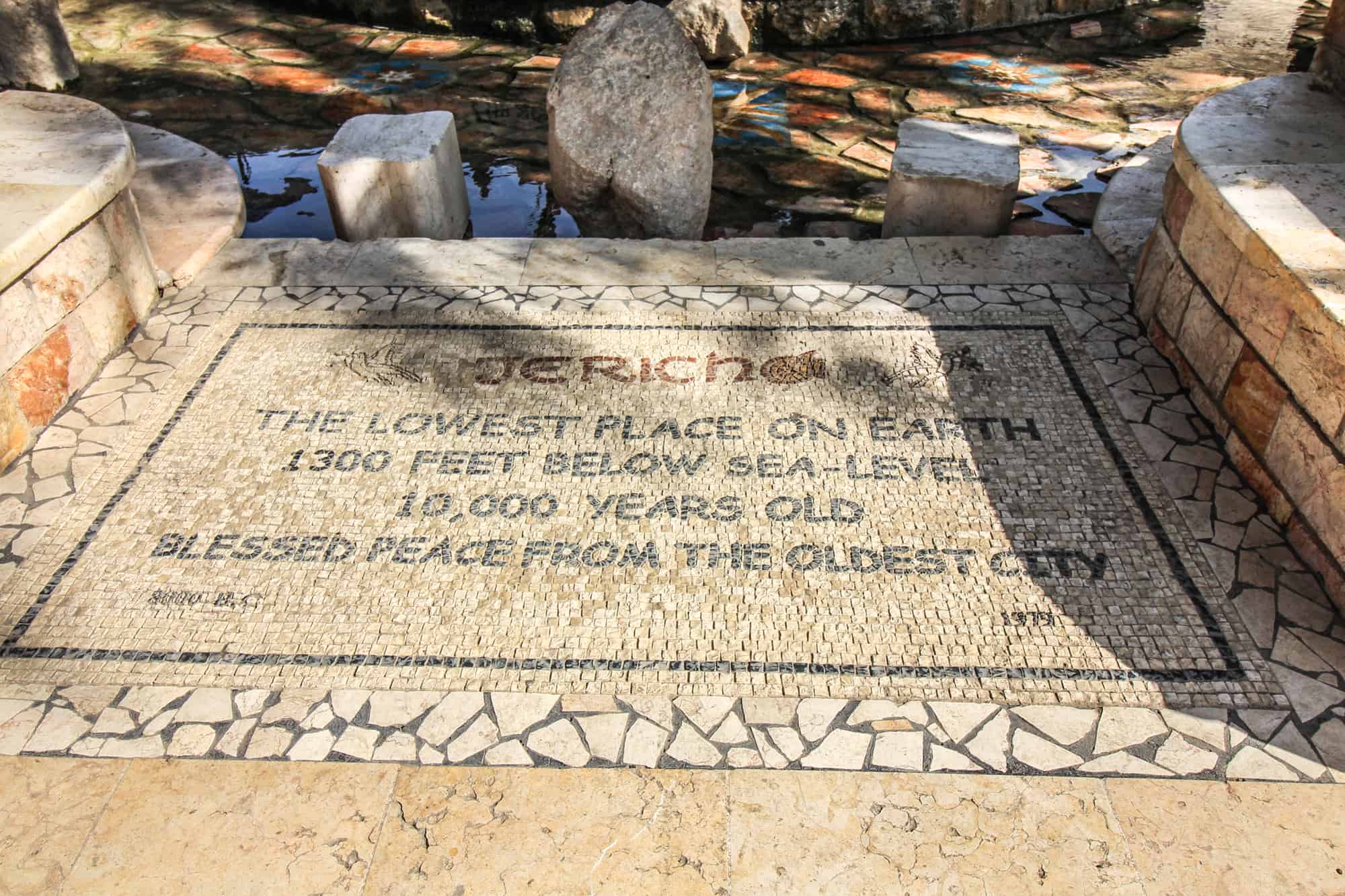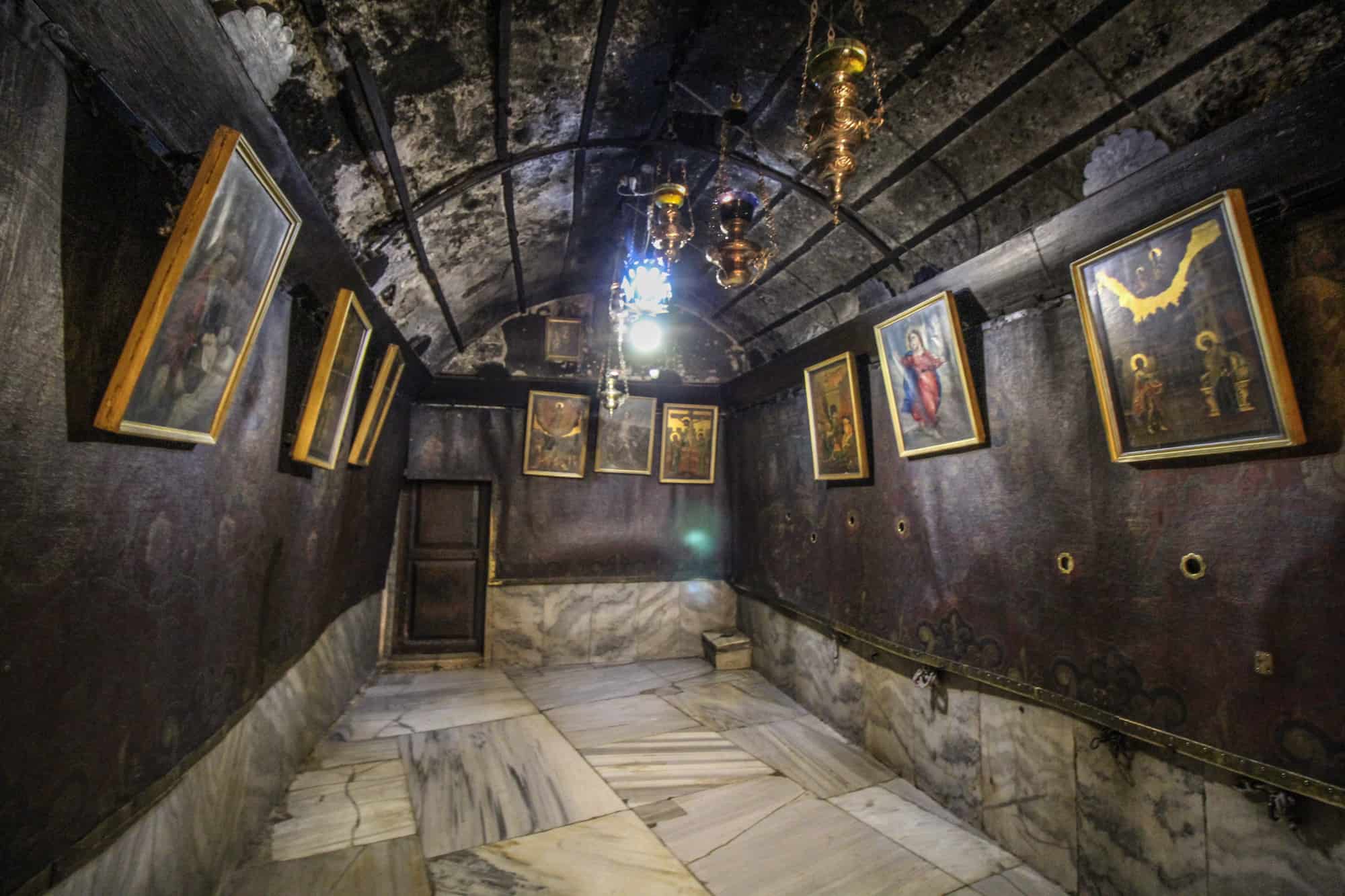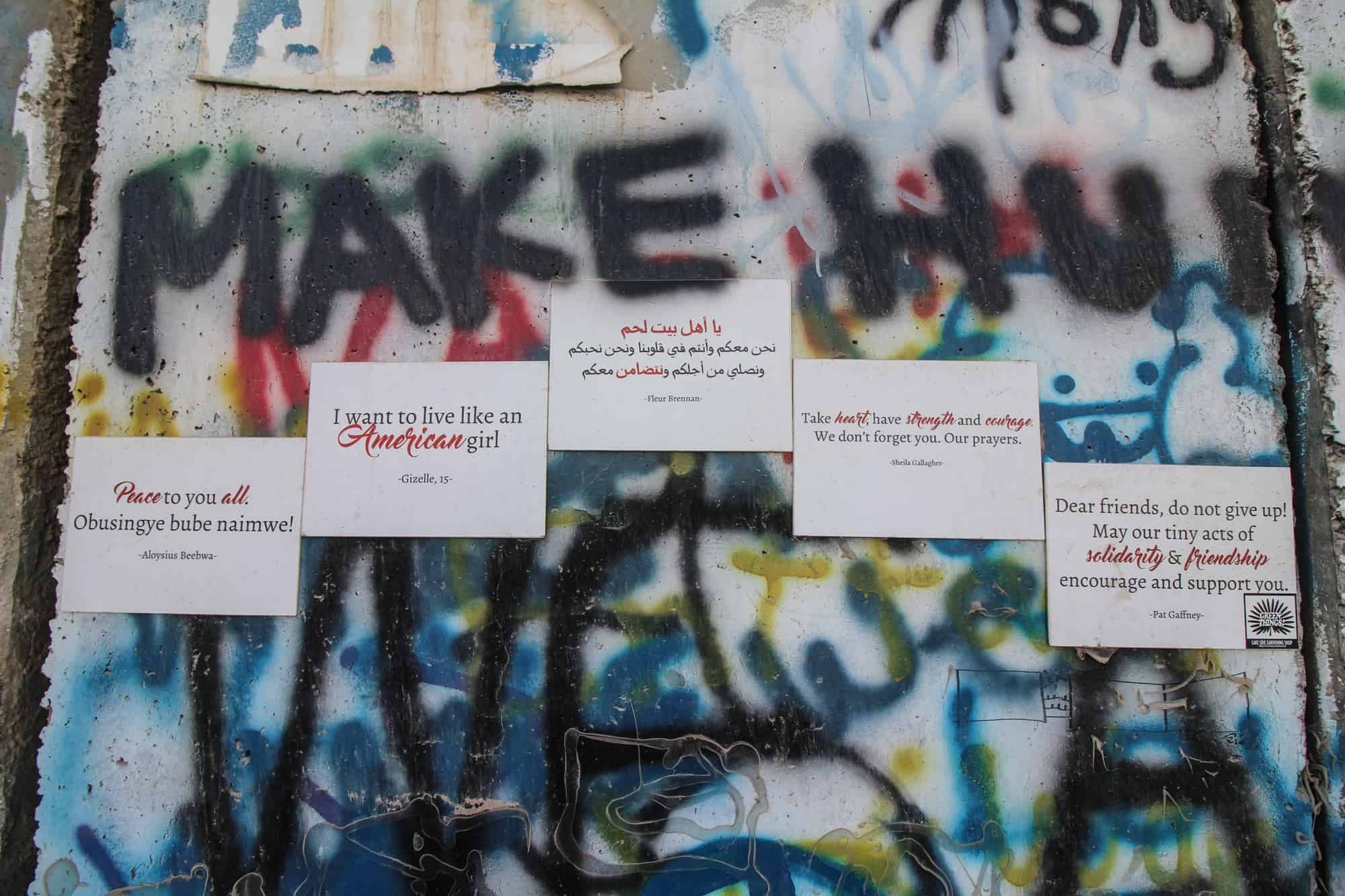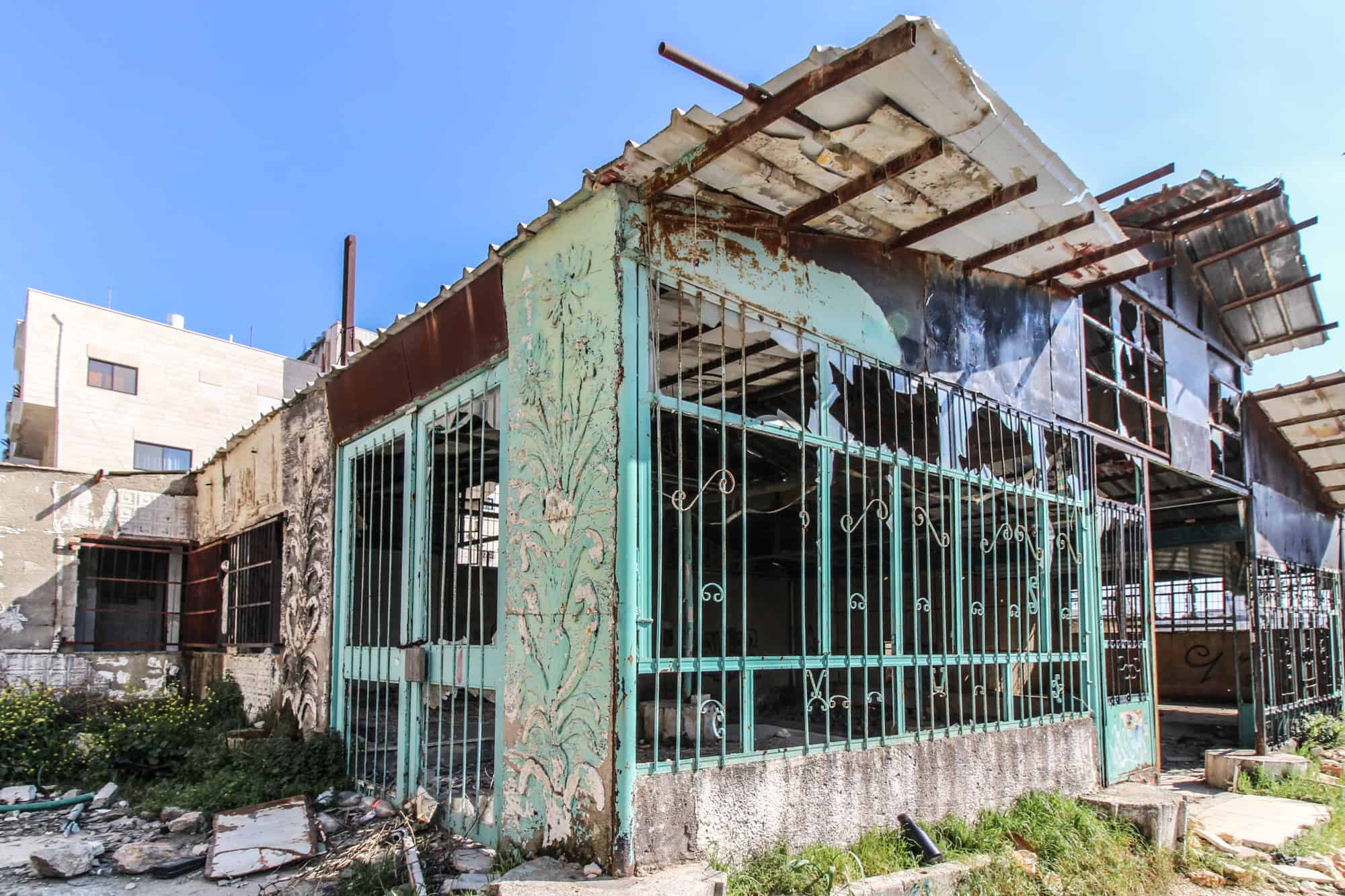With the Best of Westbank Tour to Jericho, Ramallah and Bethlehem
My second trip to Palestine, the Best of the West Bank Tour, was one week after the day trip to Nablus and Jenin.
When I went to Jerusalem for the TBEX, I knew: This time, I want to go to the West Bank, I want to see Palestine. It’s called West Bank since it’s on the western banks of the river Jordan. Are you unsure if it’s safe to travel to the West Bank? Read here how my American friends from Bobo and Chichi felt during the tour and if they think people are in danger.
And now I would like to take you to the highlight of the tour to Jericho, Ramallah, and Bethlehem.
Baptism Site in the River Jordan – First Stop of the Best of the West Bank Tour
Our first destination was the river Jordan – to be precise: The place where Jesus was baptized.
I read on other blogs, that it’s even possible to see people getting baptized here and that the site is really crowded then. When I was there it was a peaceful and quiet place.
Jericho – Second Stop of the Best of the West Bank Tour
Jericho is one of the oldest cities in the world – if not the oldest. Excavations show us that the first settlements are around 11,000 years old, so from 9,000 BC. They are right next to the Mount of Temptation (Djebel Qarantal), where Jesus was tempted by the devil.
The Archeological Site of Jericho
Tell es-Sultan is two kilometers from the city center of Jericho. Archeologists found 23 levels of destroyed settlements built one on another.
Elisha’s Spring
Right next to the archeological site is the Ain es Sultân Spring, also called Elisha’s Spring or Elisha’s Fountain. People say its water is keeping young. Our tour guide was joking:
„I drink from this spring every day and I’m 107 old!“
Ramallah – Third Stop of the Best of the West Bank Tour
Ramallah was founded in the 16th century by the Haddadines and is home today to parts of the Palestinian government (the other part is in Gaza-City). The two Arabic word Ram and Allah mean something like the Hill of God.
The city was controlled by different countries in the past: During the Arabic-Israeli War in 1948 it was governed by Jordan. In 1967, Ramallah was occupied by the Israelis and afterward controlled by them; in 1994 there were the Oslo Accords and the Arab-Israeli Peace Process, which brought the creation of the Palestinian Authority with the function of limited self-governance over the West Bank and Gaza. Officially, Palestine’s capital is Jerusalem, but the de facto capital is Ramallah which is the political, economical and cultural center of the Palestinian territories.
The Tomb of Arafat
Here you will find as well the tomb of Jassir Arafat, Palestine’s former president. He actually wanted to be buried next to the Al-Aqsa mosque in Jerusalem, but the Israelis refused his last wish. So the Palestinians built a mausoleum in Ramallah.
Ramallah City
This is the „real“ Times Square (at least according to Palestinians):
And a visit to the local market is a must in every city in the Middle East. We eat bananas, strawberries, mandarins, and almonds, that are still green and kind of furry. People are friendly, smile at us and encourage us to try all those local delicacies.
Bethlehem – The Fourth Stop of the Best of the West Bank Tour
Our last stop was Bethlehem. I’m super excited, since I grew up in the Christian faith which makes this place very special. It’s the place where Jesus is supposed to be born. It’s the place of the three Magi who followed the star of Bethlehem, that led them to the divine infant.
This is our next destination: The Church of Nativity was built over the place where Jesus was born. In the upper part is a „normal“ orthodox church.
Going down the stairs you come to a cave. This is THE place of Jesus‘ birth:
When you go back up on the other side you get to a cloister and a Christian church.
After that we took a stroll through the city. The atmosphere is really special: Bethlehem is the only Christian city in Palestine. Still there is a lot of Arabic influence.
The last stop of our Best of the West Bank Tour led us to the wall between Palestine and Israel and to the Banksy Hotel, The Walled Off Hotel.
The Wall
During the Second Intifada in 2000 the Israelis built a 708 kilometer wall between Palestine and Israel. Here are some impressions from the wall:
An abandoned house on the other side of the street – I wouldn’t want to wake up in front of this every morning either:
It makes me speechless, sad and furious. Why do people all this to each other?
Wall Mart
If you want to put your thoughts on the wall, you can get spray in the Wall Mart. Have a look at the souvenirs in the shop as well! You will see that the Palestinian have a very special sense of humor about the whole situation.
The Walled Off Hotel or Banksy Hotel
We get to the end of the street and to The Walled Off Hotel. The whole hotel is a satire! It’s advertising itself as the hotel with the worst view in the world and was designed by an artist called Banksy, who related the interior to the Mideast conflict.
The piano is playing by itself, which is giving the atmosphere a spooky touch! The entire room depressing.
Banksy sprayed grafittis all over the city. I’ve seen two of them:
I’m happy when I can get out of this and feel the sun on my skin. We drive back to Jerusalem on the other side of the wall. I’m thankful that I can do that. I’m thankful that I grew up in a country without a wall (let’s ignore the first two years of my life). I’m thankful for my German passport that is allowing me to travel wherever I want. While others can’t even go to the neighbor country. I realize how privileged I am. And I promise myself that I will use this privilege as much as I can – because I feel like it’s my duty to do so now.
Did you like this blog post?
Share it in your social networks!
Newsletter
Subscribe to my newsletter so I can keep you posted about my life of travels and as a digital nomad! You will never miss a new blog post, a new ebook or where my next adventure is going to bring us. Because it’s never going to be boring!


